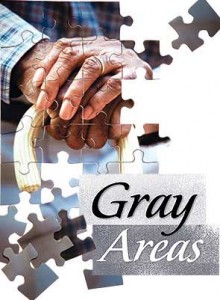One of the ways I think the field of geriatrics has failed is in articulating its value proposition to the consumer. If we want to spread competence in geriatric care throughout the health professions, at the end of the day there has to be a demand (not a need that experts and partisans see, but a demand backed up by dollars and decisions) from consumers for the expertise. Therefore, we need to communicate to the public what the added value of geriatrics expertise is--to them.
Articulating this value has been inhibited by tension among the different notions of the role of geriatric specialization within the health professions. Is geriatrics a practice specialty that should be as generally available to older adults as pediatricians and pediatric specialists are to children? Or is it an academic specialty whose skills should be incorporated in the basic training of generalists in all professions? Given the discipline’s small and fragile state, do geriatrics specialists dare critique the care delivered by their generalist and non-geriatrician specialist colleagues? Can we prove that our care is actually better? Dare we aspire to a day when at least the most complex and frail older adults DEMAND a geriatrics expert as people do oncology experts when they have cancer?

I don’t know the answers to these questions--I have my own opinions, but that’s all they are. And to my mind much of the debate on these issues is arid and cut off from reality, and therefore prevented from making any progress.
In the spirit of appreciative inquiry, I’d like to offer up an example of the value of geriatrics described in a meaningful, concrete, and accessible way. The Fall 2007 issue of the University of Alabama at Birmingham (UAB) School of Medicine Alumni bulletin was entitled “Gray Areas” and included a series of articles describing what is special about care from geriatrics experts. The author, Charles Buchanan, starts out describing geriatrics as offering “the benefits of its big-picture approach to medicine, which emphasizes compassion and quality of life over cures and treating the whole patient instead of focusing on specific diseases.”
In the article, Dr. Kellie Flood, one of UAB’s geriatricians, describes the patient-focused mindset that governs geriatric practice:
It’s utilizing the best standards of care for each organ system while paying attention to the patient’s geriatric issues and their goals and expectations... We ask, “Is this patient’s goal to have an ejection fraction of 40 percent, or is it to be able to go to their grandson’s graduation? And how do we make that happen?” Because if we get their ejection fraction up to 40 percent, but to do that, their blood pressure is 80, and they fall over every time they stand up, then they can’t go to their grandson’s graduation.
Treating the whole patient means listening to the patient and accepting that health problems in older adults can be complex and interrelated. Associate Professor Ali Ahmed, MD, discusses a case of overtreatment due to a failure to understand underlying problems:
“You have to keep your eyes open and apply simple medicine you learned in your first and second years of medical school,” says associate professor Ali Ahmed, MD, who specializes in treating heart failure in older adults. He recalls an octogenarian patient who frequently visited the emergency room for dizziness and breathing problems, followed by hospitalizations and invasive tests. When she finally visited Ahmed’s geriatric heart failure clinic, she told him she had recently lost her husband of 50 years, sold her home, and moved to a new city to be close to her children. Ahmed realized that the source of the symptoms wasn’t physical, but emotional. The major life-changing events had led to depression, but the patient was not aware of it. After he treated her depression, “all her symptoms got completely better,” Ahmed says.
Kathryn Burgio, a psychologist specializing in incontinence, describes the preference for low-tech, high touch interventions:
“Many older patients are in a delicate balance, so we want to intervene as little as we can,” says Burgio. Consequently, UAB’s geriatrics specialists offer an arsenal of nonpharmacological options. For incontinence, which impacts about a third of older adults, particularly women, Burgio says behavioral interventions have high rates of success. “We spend a lot of time teaching patients where their pelvic floor muscles are, how to contract them, how to exercise and strengthen them, and how to use them when they have an urge to go to the bathroom,” she explains.
The UAB geriatric specialists listen carefully to patients to try to understand exactly what is wrong, rather than jumping immediately to tests or invasive procedures. To address the complex problems of older adults in hospital situations, UAB’s hospital is adding an Acute Care for Elders (ACE) unit. It will use a team including gerontological nurse specialists, physical and occupational therapists, nutritionists, social workers, pharmacists, and others, who will take into account a patient’s entire situation, rather than focusing on just one acute condition.
This article inspired me to make a list of the key attributes of geriatric care:
- It is integrated, considering the whole person beyond an organ or disease.
- It is patient centered, focusing on the goals of the person.
- It is sensitive, taking the time to listen and hear.
- It balances complexity using the best evidence.
- It is interdisciplinary, coordinating the skills of a team of experts.
- It is proactive and preventative, avoiding many of the risks and common pitfalls of usual care.
So I ask you… Why would someone NOT want this kind of care?
